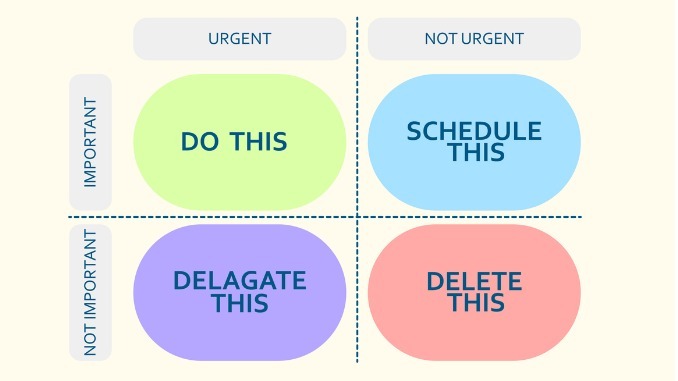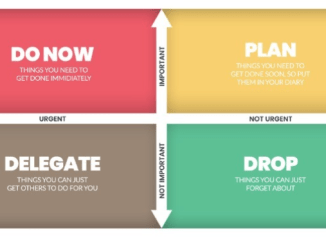
Master your time and priorities with the Eisenhower Matrix, a proven method to focus on what truly matters by categorising tasks based on urgency and importance
It’s time to step into the matrix. No, not the Keanu Reeves version. We’re talking about the Eisenhower Matrix. In this next installment of our series on time management techniques, we’re exploring how this method can help you prioritise tasks effectively by categorising them based on their importance and urgency.
The Eisenhower Matrix, named after the 34th President of the United States, Dwight D. Eisenhower, is a practical system that goes beyond simple to-do lists. What sets it apart is its focus on two key questions: What should I focus on now? What can I delegate or eliminate? This approach allows you to streamline your workload, reclaim valuable time and focus on what matters.
Understanding Urgent vs. Important
To get started, it’s essential to differentiate between tasks that are urgent and those that are important:
- Urgent tasks demand immediate attention. These are the tasks that, if not addressed quickly, lead to immediate consequences or missed deadlines.
- Important tasks may not have an immediate deadline, but they are crucial for achieving long-term goals. These tasks often require deep focus, planning and strategic thinking.
The Four Quadrants
The matrix divides tasks into four key categories, guiding you on how to handle each:
Do (Urgent and Important)
These are your top priorities – tasks that require your immediate focus. Examples include meeting critical deadlines, handling emergencies, or resolving pressing issues. Aim to complete these tasks as soon as possible.
Schedule (Important but Not Urgent)
Tasks in this quadrant contribute to long-term success and personal growth. Examples include strategic planning, professional development and building relationships. Block time in your calendar to focus on these without distraction.
Delegate (Urgent but Not Important)
These tasks require action but don’t necessarily need your direct involvement. Identify what can be assigned to others, whether it’s routine administrative work, scheduling, or other tasks someone else can handle effectively.
Delete (Neither Urgent nor Important)
These are the distractions or low-value tasks that don’t add meaningful progress toward your goals. Examples include excessive scrolling on social media or unnecessary meetings. Eliminate these where possible to free up time for what truly matters.
To put the Eisenhower Matrix into action, start by listing everything on your plate, from big projects to small tasks. Next, sort each task into one of the four quadrants based on urgency and importance, being honest about what truly deserves your time. Focus on completing tasks in the “Do” category right away, schedule “Important but Not Urgent” tasks into your calendar, delegate or outsource “Urgent but Not Important” items and eliminate unnecessary tasks in the “Delete” quadrant.
By integrating the Eisenhower Matrix into your daily routine, you can take control of your time, reduce stress and focus on what truly matters. Remember, the key to effective time management isn’t about doing everything – it’s about doing the right things.


Be the first to comment